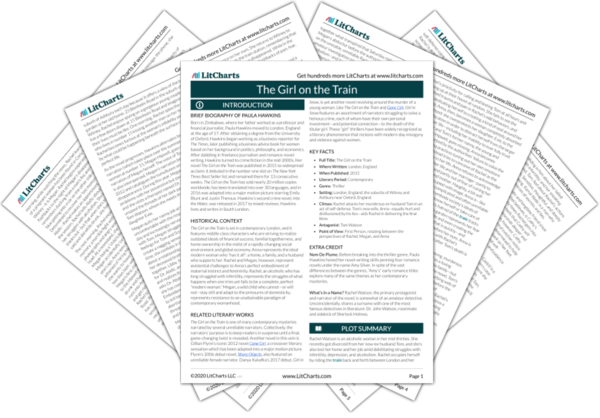Next
Summary
The Girl on the Train Study Guide |
Next
Summary
|
Welcome to the LitCharts study guide on Paula Hawkins's The Girl on the Train. Created by the original team behind SparkNotes, LitCharts are the world's best literature guides.

Nom De Plume. Before breaking into the thriller genre, Paula Hawkins honed her novel-writing skills penning four romance novels under the name Amy Silver. In spite of the vast differences between the genres, “Amy’s” early romance titles explore many of the same themes as her contemporary mysteries.
What’s In a Name? Rachel Watson, the primary protagonist and narrator of the novel, is somewhat of an amateur detective. Uncoincidentally, shares a surname with one of the most famous detectives in literature: Dr. John Watson, roommate and sidekick of Sherlock Holmes.